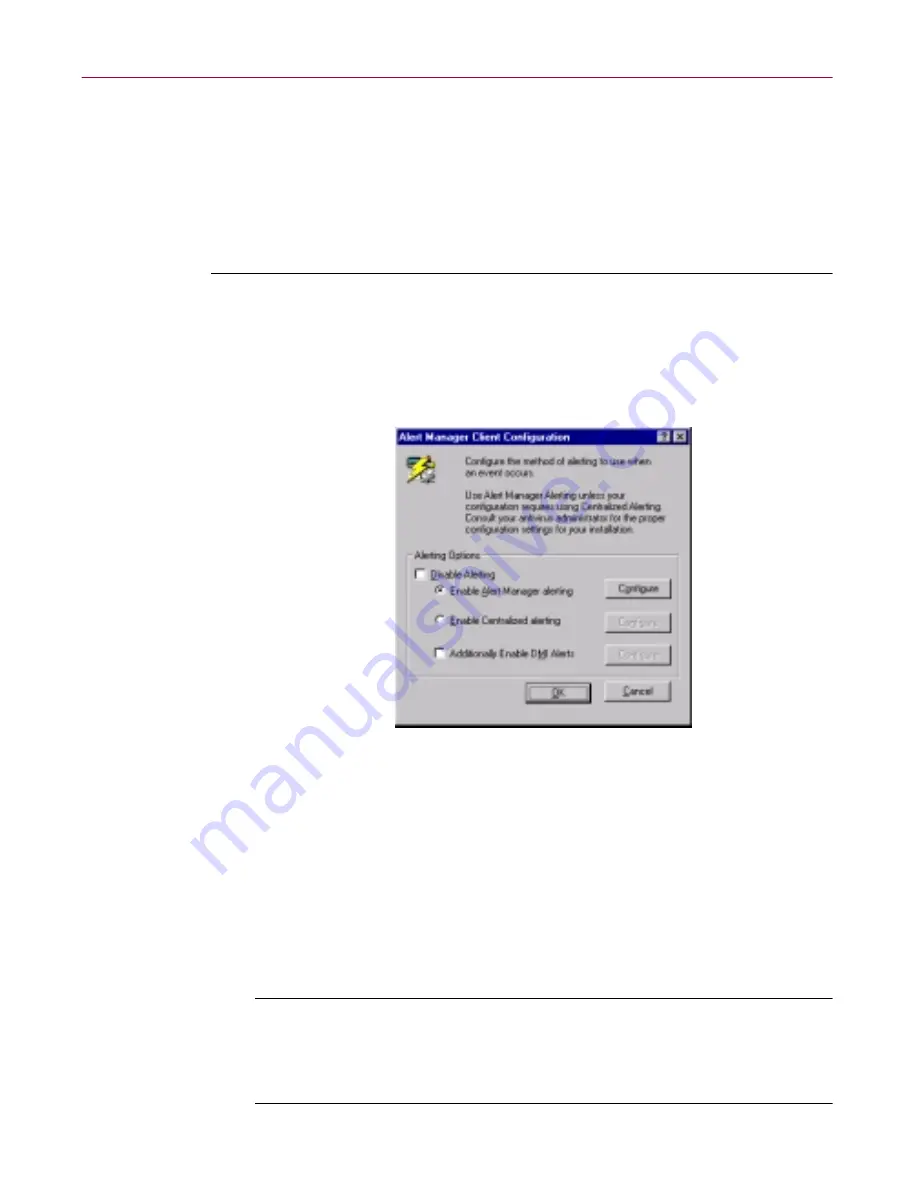
Administrator’s Guide
109
Sending Alert Messages
This tells each Dr Solomon’s Anti-Virus component to send an alert event to
the Alert Manager client utility each time it detects a virus or malicious object.
The client utility, in turn, passes the alert message to the Alert Manager server
you designate. If you do not set your software to generate alert messages in the
first place, the client utility will have nothing to pass to the Alert Manager
server for distribution.
To start and configure the Alert Manager utility, follow these steps:
1. Click
Start
in the Windows taskbar, point to
Programs
, then to
Network
Associates
. Next, choose
Dr Solomon’s Anti-Virus Alerting
Configuration
.
The Alert Manager Client Configuration page appears.
2
Figure 5-1. Alert Manager Client Configuration dialog box
2. Verify that the
Disable Alerting checkbox
is clear. This activates the
remaining options in this dialog box.
Select this checkbox only if you want the Alert Manager Client
Configuration utility not to pass alert messages from your anti-virus
software to the Alert Manager server or to your Desktop Management
Interface (DMI) administrative software. By default, this checkbox is
clear. McAfee recommends that you leave it clear so that the client sends
alert messages out.
NOTE:
If you use McAfee ePolicy Orchestrator software in your
network environment, Dr Solomon’s Anti-Virus will still send alert
messages to the ePolicy Orchestrator reporting component whether
you activate or disable alerting here.
Summary of Contents for DR SOLOMON S ANTI-VIRUS 8.5
Page 1: ...Dr Solomon s Anti Virus Administrator s Guide Version 8 5 ...
Page 146: ...Using Dr Solomon s Anti Virus Administrative Utilities 146 Dr Solomon s Anti Virus ...
Page 166: ...Installed Files 166 Dr Solomon s Anti Virus ...
Page 184: ...Using Dr Solomon s Anti Virus Command line Options 184 Dr Solomon s Anti Virus ...
Page 216: ...Understanding iDAT Technology 216 Dr Solomon s Anti Virus ...






























